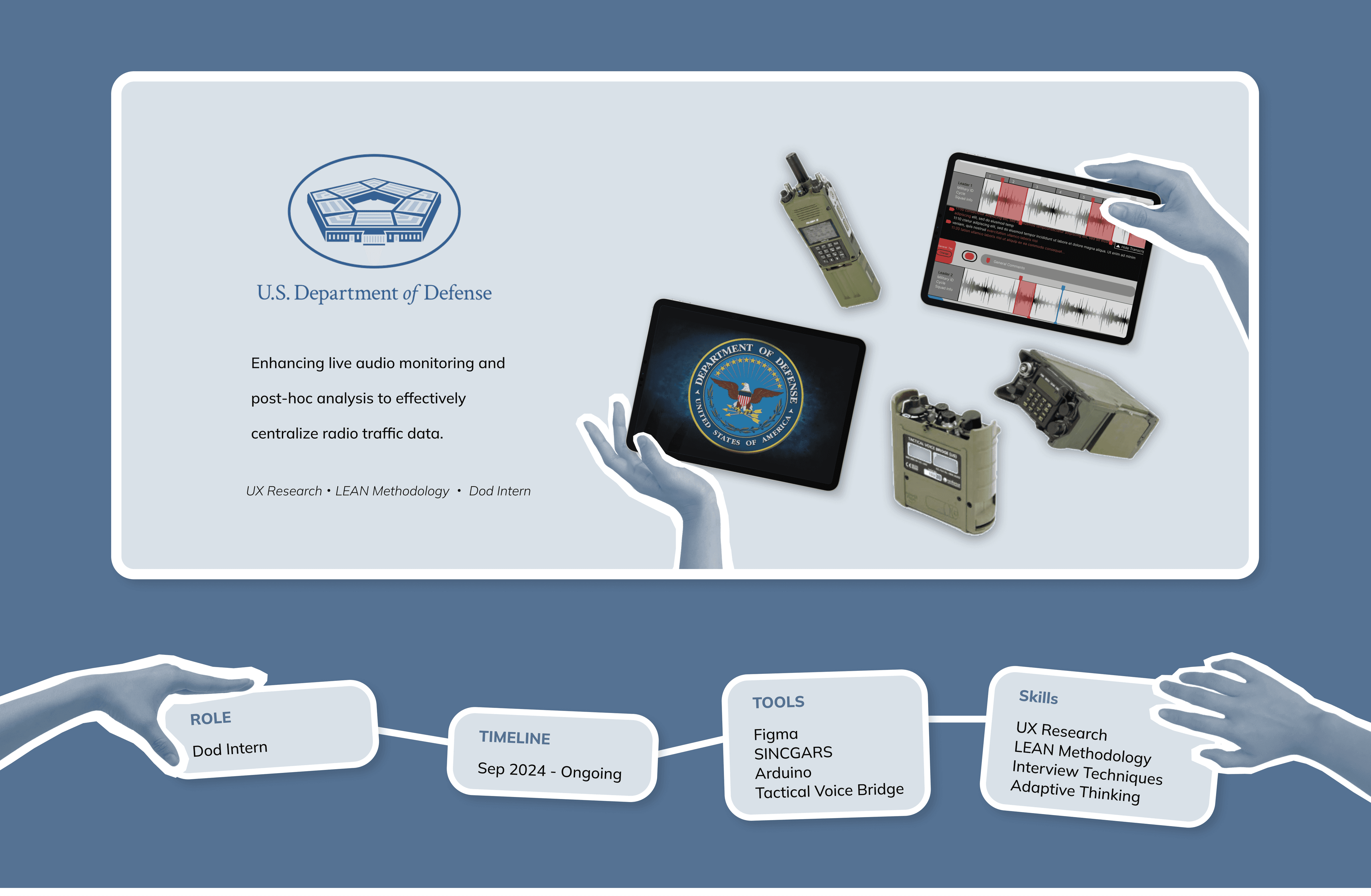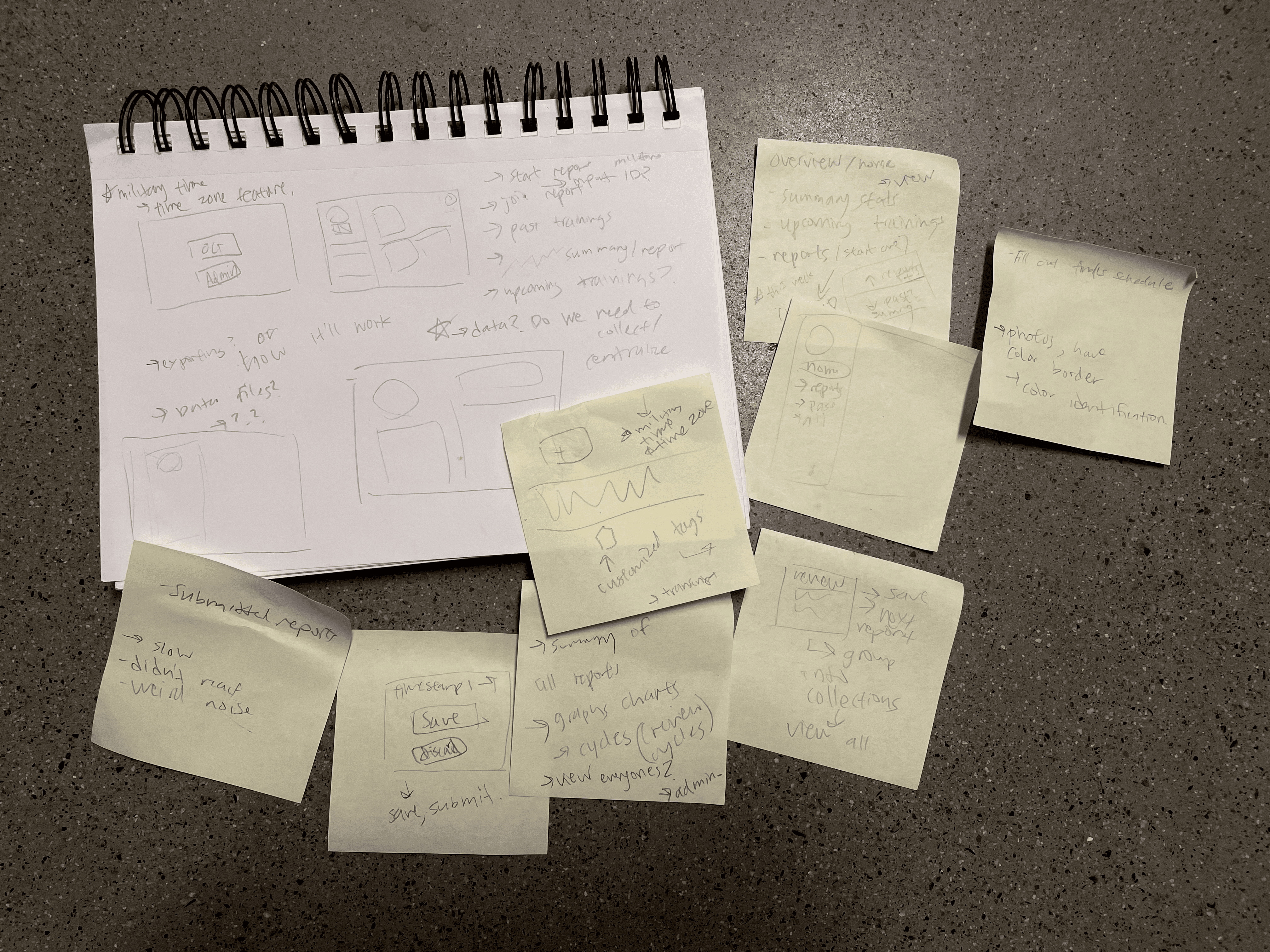
Overview
CONTEXT
Designing for Defense.
As a part of my Innovating for National Security Internship, my team and I partnered up with the Department of Defense- specifically our problem sponsor Captain Christian Perez, an Observer Coach/Trainer (OCT) for the Joint Multinational Readiness Center (JMRC) located in Hohenfels, Germany, to improve live radio communication monitoring during tactical training exercises.
THE PROBLEM
Inefficient and Outdated Practice.
Observer Communication Trainers (OCTs) lack centralized, real-time training data, leading to inefficiencies in monitoring and After Action Reviews.
Given Problem Statement:
“Communications Trainers need the ability to monitor communications during training exercises in order to provide thorough feedback on unit performance.“
After 30+ interviews & Germany base visit
Current Problem Statement:
“Observer Coach/Trainers at the JMRC, specifically at the Maneuvers and Artillery Training units, need the ability to monitor radio communication during training exercises and store/analyze training data in a centralized system in order to provide thorough feedback on unit performance.”
Further Breakdown
What they are looking for: OCTs need a way to monitor the training unit’s radio communication in real-time to provide effective feedback instead of relying on after reports.
Impact: Training units would receive more actionable feedback on their performance, allowing them to operate more effectively in tactical scenarios.
OUR SOLUTION
Centralizing Qualitative and Quantitative Data.
Technology: Tactical Voice Bridge (TVB) to connect incompatible radios.
Software: Monitoring Interface that aggregates uploaded radio data, real-time geolocation tracking, and transcript analysis to deliver actionable insights.
MY CONTRIBUTION
Designing Audio Monitoring Interface.
As the sole designer on our intern team, I collaborated cross-functionally with engineers and developer interns to design data visualization interfaces for our MVP- an audio monitoring platform that centralized traffic data from various trainer radio frequencies. This system integrated radio traffic, geolocation data, and manual annotations into a single, intuitive dashboard. Additionally, the platform incorporated a cloud-based AI data pipeline for training advanced LLMs, enabling automated error detection, real-time analysis, and continuous AI-driven insights to enhance future scalability and efficiency.
THE CHALLENGE
With only six hours to prepare a proposal pitch before my teammates landed in Germany, I faced the daunting task of designing something entirely unfamiliar to me. This task arose after an insightful interview with Michael Getsinger, a counterintelligence professional with experience as both a trainee and an OC/T at the JMRC, who suggested focusing on data centralization for our MVP solution. Before the interview, our team was primarily focused on the technology aspect, leaving the software design largely untouched. After the discussion, and with Erika and Lanka already on their way to Germany, it was decided that I would draft initial designs to showcase to base officials.
EXPLORATIONS

FEATURES:
For my proposal, I focused on two key features:
The ability to flag and label errors during live audio monitoring with customizable markers
The centralization of all audio data, where users can view their database with saved audio segments/time-stamps for effective post-hoc analysis of each individual training.




Details are limited as I’m unable to share high-fidelity specifics of our MVP solution publicly, but please to reach out for more information!
Thanks for stopping by!
Let’s connect & create a positive impact together :)
© 2025 Vivian Liu